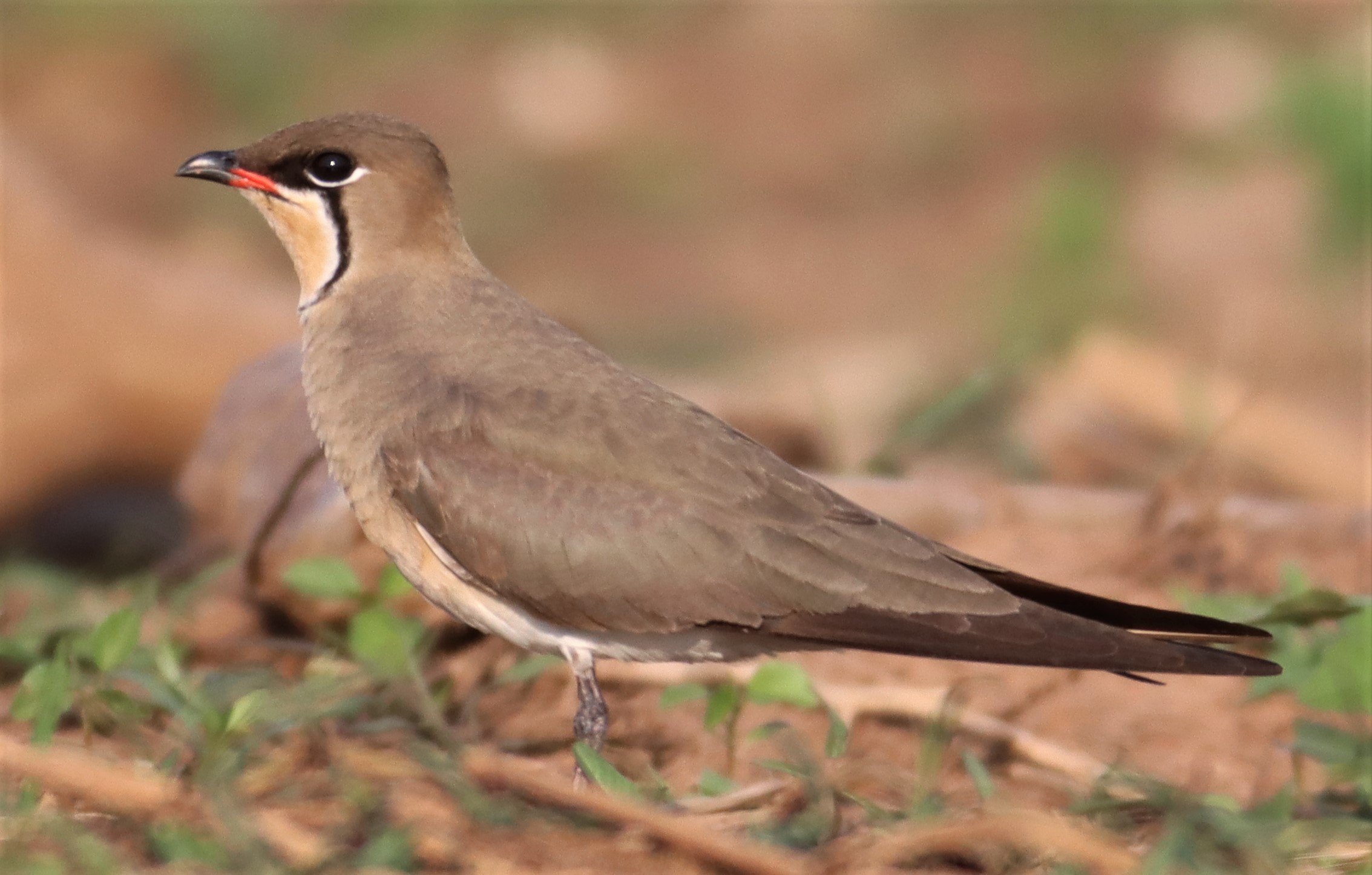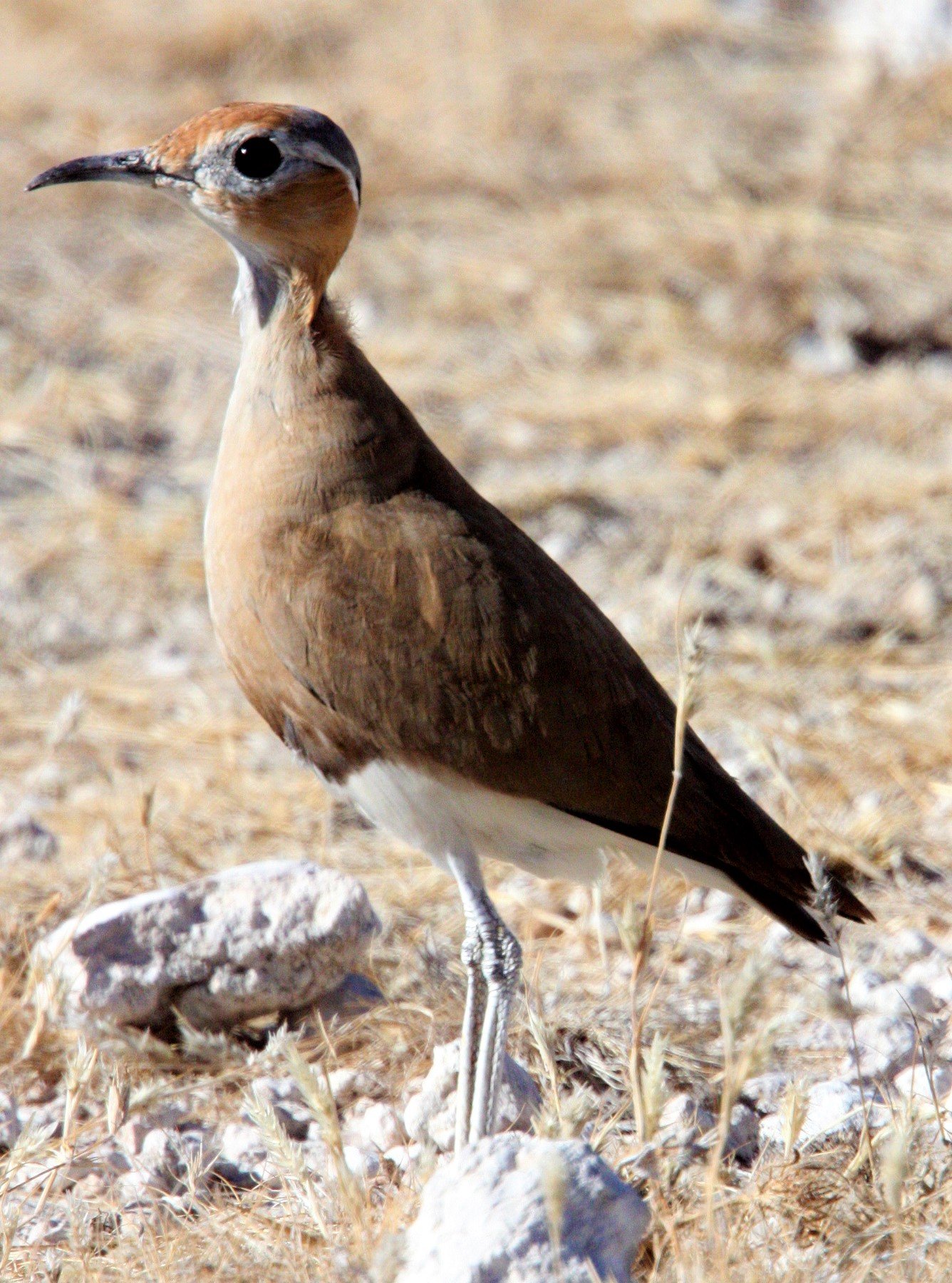
Family Glareolidae, Coursers & Pratincoles

Glareolidae is a family of birds in the wader suborder Charadrii. It contains two distinct groups, the pratincoles and the coursers. The atypical Egyptian plover (Pluvianus aegyptius), traditionally placed in this family, is now known to be only distantly related.
The family contains 17 species in 4 genera.
Courting Small Pratincoles in Thailand
The feature that defines the family from the rest of the order is the bill, which is arched and has the nostrils at the base. The pratincoles have short legs, long pointed wings and long forked tails. They have a buoyant flight that allows them the unusual (for the order) hunting technique of taking their insect prey on the wing like swallows. The wings also allow for long migrations in some species. The coursers have long legs, which are used to run (giving the group its name). The wings are shorter and have a more sustained flight than that of the pratincoles.
The coursers are typically found in open and arid environments such as deserts and scrub. The three-banded courser and bronze-winged courser are exceptions, being found in woodland and usually away from open land. The subfamily is usually also associated with lowland areas, although the Burchell's courser is found in southern Africa's Afro-alpine areas. The pratincoles are associated with wetlands, rivers, estuaries and other inland waterways. As with the coursers there are exceptions, particularly the black-winged pratincole which breeds and feeds on open steppes.
Rock Pratincole at Murchison Falls, Uganda
Some species of pratincole are long-distance migrants. Shorter migrations include those of the Madagascar pratincole, which migrates from its breeding grounds in Madagascar to East Africa; in contrast the black-winged pratincole migrates from the steppes of Eastern Europe and Central Asia to West and Southern Africa. The migration, which can measure 10,000 km (6,200 mi) in distance, is often undertaken as a single non-stop flight and is flown at high altitude. The coursers are not particularly migratory, although the cream-colored courser does migrate from the northern extremes of its range in the winter. The coursers are fairly nomadic, but do not undertake long-distance migrations.
The coursers are crepuscular and nocturnal in their habits, and are generally inconspicuous, particularly the woodland species. They are not as social as the highly gregarious and noisy pratincoles, some species of which may also active at dawn and dusk.
Insects form the majority of the diet of the Glareolidae. The pratincoles forage mainly on the wing, but are able to take prey on the ground as well. They are opportunistic, and have been recorded attending herds of antelope to snatch insects flushed up by their movement, or even insects attracted to street lights. Swarming insects, such as locusts or termites, are particularly targeted. Coursers are exclusively terrestrial, and feed in a plover-like fashion, running, then stopping to scan for prey before moving on. Some species may dig for insects in soft soil with their bills. In addition to insects, coursers may also take molluscs and some seeds.
The below galleries have images of the various species of Glareolidae that I have been very fortunate to have seen throughout the years. Simply follow the links on the images to see larger image galleries for each species.

Burchell’s Courser (Cursorius rufus) Namibia
Cream-colored Courser (Cursorius cursor) Tunisia
Double-banded Courser (Rhinoptilus africanus) South Africa
Black-winged Pratincole (Glareola nordmanni) Uganda
Collared Pratincole (Glareola pratinco) Africa
Rock Pratincole (Glareola nuchalis) Uganda
Oriental Pratincole (Glareola maldivarum) Thailand
Small Pratincole (Glareola lactea) Thailand









